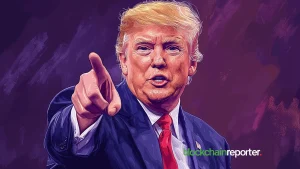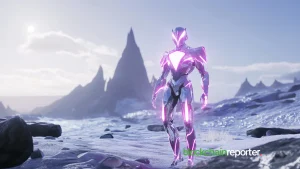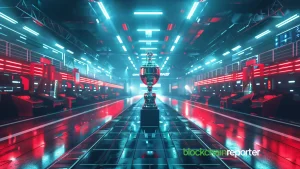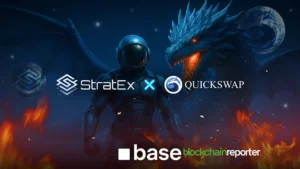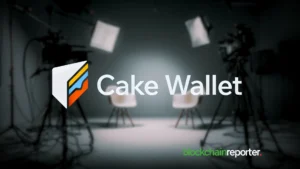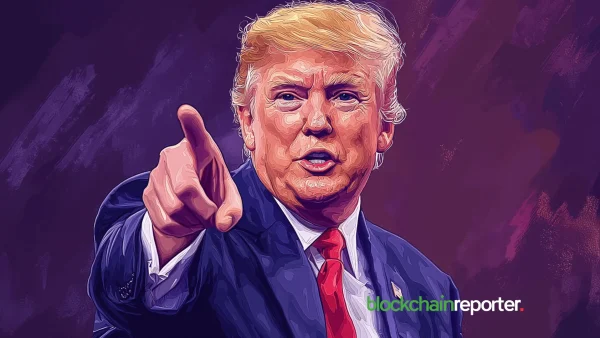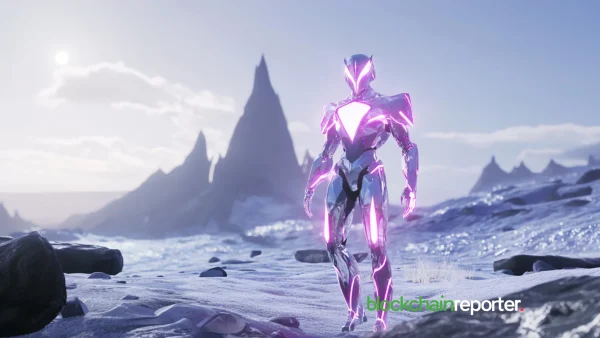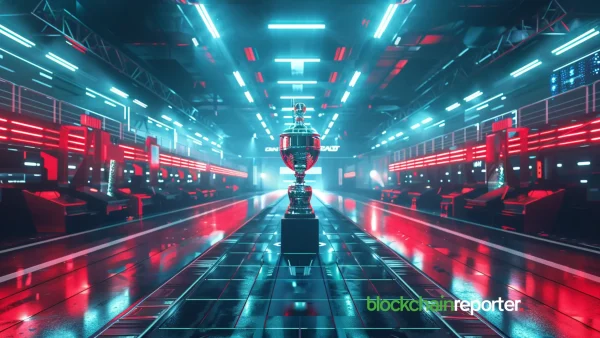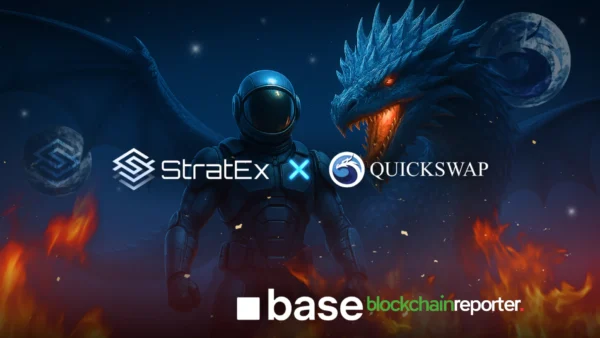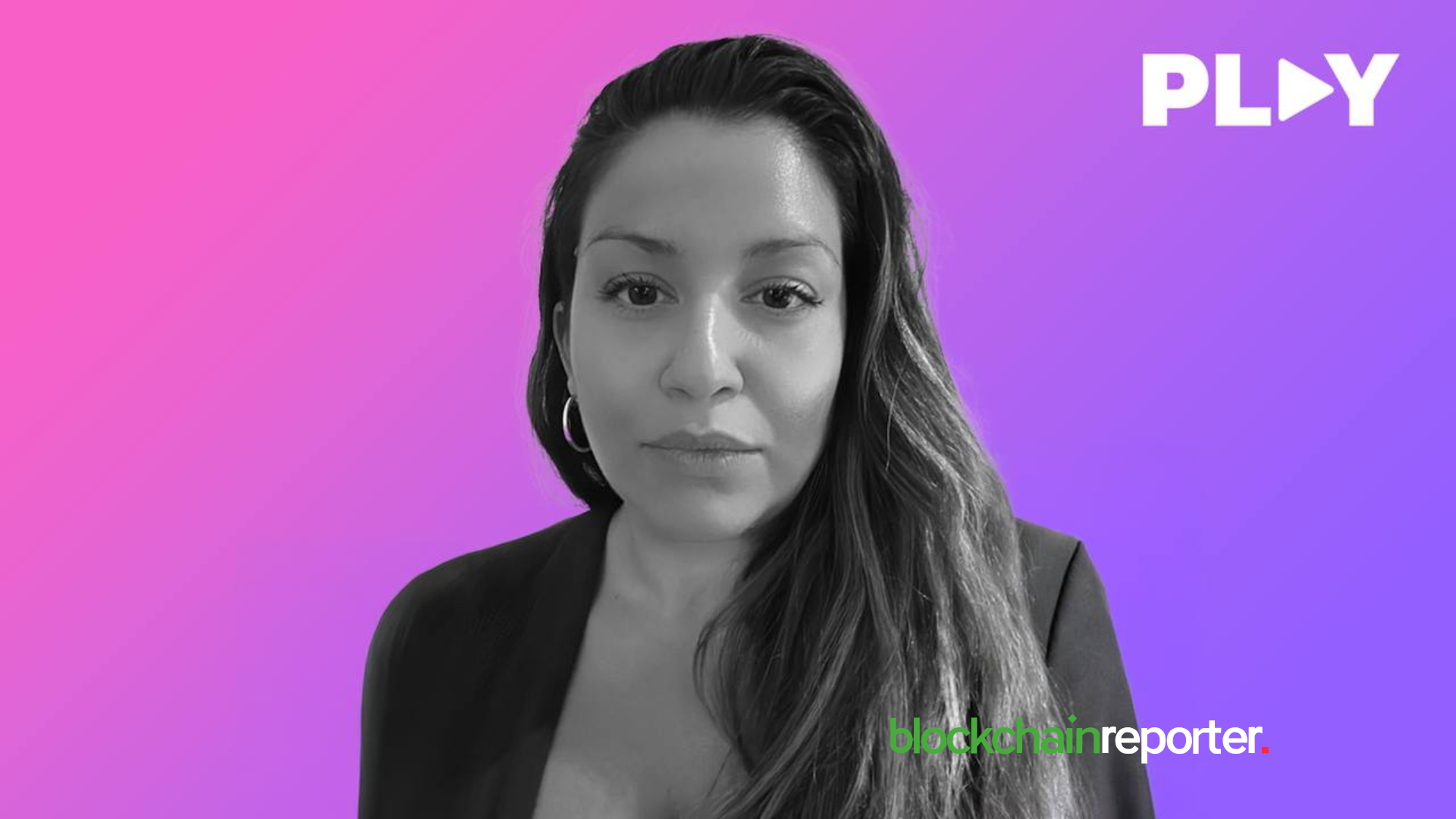
In this interview, we delve into PLAY’s mission to bring Web3 gaming into the mainstream, focusing on their partnership with mobile gaming giant TapNation to integrate blockchain into popular titles like Rock Crawling. With a vision of democratizing access to Web3 through mobile-first strategies, PLAY is pioneering tools and platforms that empower both players and developers to engage with digital assets in meaningful ways. From offering true ownership of in-game items to simplifying blockchain technology for newcomers, PLAY is setting the stage for a future where every player can experience the benefits of blockchain in a seamless, accessible way. Here, we explore how PLAY’s BUILD and PLAY ID platforms lower the barriers to Web3, creating a collaborative and decentralized gaming ecosystem where gamers can own and trade assets, connect through interoperable identities, and shape the stories within the games they play.
PLAY recently partnered with TapNation to transform the popular mobile game Rock Crawling into a Web3 title. Could you elaborate on how this collaboration came about, and what excites you most about integrating blockchain into such a widely-played mobile game?
Our vision at PLAY is to make Web3 gaming accessible to everyone. TapNation, as one of the biggest mobile game publishers globally, is keen to pioneer new use cases in gaming with Web3 technology. The PLAY x TapNation partnership came from this shared ambition to bring blockchain-powered games to mainstream audiences who may not have access to traditional gaming hardware but can be introduced to Web3 through their phones.
What excites me most about turning TapNation’s Rock Crawling into a Web3 title is how blockchain gives players true ownership of their in-game assets, which changes how they engage with the game. Through our SDKs, players will be able to own, trade, and interact with their digital assets in ways that create a deeper, more rewarding experience.
What are some of the biggest challenges in bringing blockchain-powered games to a mainstream mobile gaming audience? How is PLAY addressing these challenges?
To begin with, there needs to be increased awareness and understanding of blockchain technology and crypto. But we’re already seeing an exciting shift: Gen Z and Gen Alpha are much more open to crypto and digital assets. Earlier this year at the Napoli Comicon 2024, we conducted a survey and found that 21% of 377 respondents own crypto, and 55% stating they’d like to own crypto. I think there is a misconception that gamers don’t want to play Web3 games or participate in the Web3 ecosystem. At PLAY, we believe they just haven’t yet seen or experienced games that put FUN at the forefront of the experience or that are uber accessible.
As we simplify blockchain experiences, mainstream mobile players who may be new to Web3 concepts can interact with the features brought by the technology without needing to understand the technology behind it. PLAY has developed tools like our unique PLAY ID, which is essentially your digital identity and footprint of your entire Web3 journey, including your on-chain achivements, rewards, and gaming history — and you’re in full control and ownership of this identity.
Your BUILD PLAY Development Platform is designed to help developers build on-chain without needing extensive blockchain knowledge. Could you explain how this platform works and the specific tools or resources available to developers?
On BUILD PLAY, developers get access to our suite of tools to bring their games onchain – these include the ability to tap into monetization funnels powered by the blockchain, cost-effective user acquisition (UA) using precise on-chain data, wallets, on-chain IDs, user-generated content (UGC) tools, and so much more. It also enables you to publish your game on various distribution channels, such as Telegram or other messaging platforms, expanding your game’s reach to the maximum potential audience. Our SDKs support games built with Unity, Unreal, GoDot, and APIs for everything in between. Whether you’re just starting your Web3 journey looking for something beginner-friendly, lightweight and versatile, or a big team developing an elaborate, graphic-intensive project, you’ll have the option to choose the best architecture and support that meets your requirements.
How do you envision BUILD PLAY lowering the barrier to entry for developers looking to explore Web3 gaming? What kinds of games or experiences do you hope this platform will enable?
BUILD PLAY is a tokenized SaaS platform that we know will empower the next generation of indie developers and inspire large, established studios to try something new and innovative in terms of the gaming experiences they can offer their player base. With our turnkey solutions and integration tools, developers can put their focus on gameplay, storytelling, and community building, rather than navigating technical complexities.
We’re excited to see BUILD PLAY inspire player experiences from simple, engaging mobile titles to immersive, multiplayer worlds with player-driven economies. Ultimately, we envision this platform bringing out community-centered games that fully leverage the benefits of Web3 to give players true ownership, real stakes, and more meaningful engagement in their favorite games.
PLAY focuses on creating meaningful digital assets through NFTs, emphasizing player ownership. Could you expand on the importance of true player ownership in the gaming economy, and how NFTs can enhance player experiences beyond just cosmetic or collectible assets?
When players truly own their digital assets, their role shifts from participants to stakeholders, which means they can contribute to the game’s economy and community.
Beyond their cosmetic and collectible appeal, NFTs enable us to build player-driven economies where players can influence how assets are created and traded in-game — and carried across games — which adds a deeper level of interaction and fosters long-term value and connection.
Ownership also allows user aquisition to become much more scalable and effective. As game data runs through the blockchain, it generates data sets that allow developers to run highly targeted UA campaigns. Why are they effective? These campaigns are driven by particular data sets that identify players most likely to convert, based on precise on chain-data. Once our AI-powered GROW PLAY tool defines the ideal player profile, as a developer you can engage with these players with incentives they actually want, such as a game asset or something of value. This makes the player feel valued, and therefore more likely to convert, engage, and become loyal participants.
In your view, what role do NFTs play in building sustainable gaming ecosystems, and how do you ensure that these digital assets remain valuable and relevant to players long-term?
As I mentioned earlier, thanks to NFTs, digital assets can now become part of a player’s broader, long-term gaming journey and digital identity. At PLAY, we’re focused on integrating NFTs in ways that are directly tied to gameplay, player progression, reputational capital, and identity. When assets evolve alongside a player’s achievements or provide unique in-game abilities, they remain valuable and relevant over time. This approach attracts and retains players, fostering a sustainable, player-driven economy where players feel more invested in the game and connected with each other.
PLAY has introduced its own altcoin, the $PLAY token, to foster a decentralized gaming economy. Can you share more about how this token works within your ecosystem and how it empowers gamers to become true stakeholders in the platform?
The $PLAY token is the foundational currency of our entire PLAY ecosystem, powering both our infrastructure and user engagement. For players, $PLAY acts as a unified token to access tools, buy services, and participate seamlessly in an integrated economy across all our games and services. It also offers players a way to invest their $PLAY to support various projects building on the PLAY platform and receive incentives for backing these projects. For developers, $PLAY provides a streamlined experience as they build, buy, and engage within our ecosystem, reducing the complexities that typically come with distributed transactions. As the only currency needed for developers to transact on any chain, $PLAY leverages the PLAY Network’s in-built layer-zero infrastructure to support a multitude of chains and ecosystems.
Designed to align the efforts of all stakeholders, $PLAY emphasizes collaboration and shared ownership. With use cases grounded in “develop to earn, create to earn, play to earn, and beta test to earn”, the $PLAY token incentivizes a range of interactions within the ecosystem, promoting sustained engagement and scalability. This token economy allows us to support a decentralized, trusted environment where growth remains stable and transparent.
Many gamers are still cautious about the role of cryptocurrencies in gaming. How does PLAY address concerns around volatility and the user experience when integrating $PLAY tokens into games?
We’re keenly aware that new Web3 players might be cautious about engaging with crypto, but we’re also seeing trends where players value stable, user-friendly ecosystems — where they can enjoy gameplay without being affected by market fluctuations. Our approach with the $PLAY token is to focus on the value of in-game actions and achievements, which means players are rewarded for engaging and contributing within the ecosystem in ways that are meaningful and lasting.
In terms of user experience, $PLAY is designed to make interaction with tokens as seamless as possible. It’s more of an ecosystem play (sorry for the pun) than a strictly in-game economy. Players can earn tokens through various in-game and ecosystem actions and rewards, so they’re focused on enjoying the game rather than the crypto mechanics. This approach keeps gameplay at the center, creating a more stable, engaging environment for players of all levels.
One of the goals of PLAY is to seamlessly bridge Web2 and Web3 gaming environments. Could you give us some examples of how you’re achieving this integration, and what advantages Web3 features bring to traditional gaming experiences?
Our approach reinvents Web3 gaming by addressing limitations such as complex onboarding processes and limited availability on mainstream platforms that held back a lot of early Web3 games. Through the PLAY ecosystem, which offers developers the BUILD PLAY Development Platform and players their own PLAY ID with a whole suite of tools, we’ve streamlined the onboarding experience so players can start playing Web3 games without having to set up external wallets or understand blockchain mechanics. Players can directly dive into games in the same way they would with Web2, but with the added benefit of owning and trading assets securely on-chain. We abstract the complexities to make room for just the FUN in games.
If we’re talking about Web3 advantages, interoperability and a secure digital identity are big ones — as a player, you can carry your assets and achievements across games, creating a more connected gaming universe. Imagine earning a unique outfit in one game and being offered a similar style in another because you’ve shared your preferences. Or achieving a certain status in one game, then unlocking comparable rewards in another as recognition for your accomplishments – that’s reputational capital. Web3 allows your identity and accomplishments to mean something. This creates a sense of continuity that deepens engagement and allows players to invest and meaningfully own their digital journey.
What strategies are you implementing to onboard players who are new to Web3? How do you ensure that the transition between Web2 and Web3 environments feels seamless for both developers and players?
We’re committed to making Web3 gaming universally accessible — seamlessly. We know the shift can seem daunting, so we’ve designed tools to make the transition feel natural for players and developers alike.
For players, we have:
- PLAY ID: This acts as a player’s digital identity and, with an integrated PLAY Wallet, simplifies user identification and keeps track of on-chain rewards and gaming history.
- PLAY Rewards: Players earn $PLAY tokens through various in-game activities, reward programs, and competitions.
- PLAY Explore: This discovery platform, along with a variety of gamestores across multiple platforms and marketplaces, leverages integrated data to help players find games and NFTs that match their preferences.
For developers, other than BUILD PLAY, we also offer:
- PAY PLAY: A fluid, fully compliant payment ecosystem that allows developers to monetize their games.
- GROW PLAY: Developers can access first-rate market data, complemented by specialized marketing and growth services, to grow and acquire users.
- CREATE PLAY: Developers — and content creators — can mint new gaming assets and tokens, and facilitate direct interactions with their fanbases.
Your new X Space podcast debuted its first episode featuring former Sony exec Shawn Layden. Can you tell us about the vision behind the podcast and the types of conversations you’re aiming to foster with gaming and blockchain leaders?
PLAYground is where we explore the big ideas shaping the future of the industry and also discuss with those who have shaped it until now. It’s about creating a space where everyone involved in shaping gaming can come together to discuss the future of games. To make Web3 gaming accessible to everyone, there are so many things we need to talk about — to share with developers the availability of resources and support they need to build great games, to educate players on the real-world benefits of Web3 technology on their gaming journey, to open up the discussion on innovation in gaming – to allow innovation to happen.
We also aim to inspire the next generation of indie developers who will create the next big IP franchise or the next big studio. To give them a chance to learn from those who have built their favorite franchises and be really honest about how difficult it truly is to build games and a gaming business.
We’re very excited to have visionaries like Shawn Layden join us to share their insights. Our aim with this podcast is to have regular conversations that inform, inspire, and connect the gaming community as we keep on innovating.
What are some of the key industry insights or trends you’ve noticed that are shaping the future of gaming in the Web3 space, particularly after your discussion with Shawn Layden?
There’s a clear shift toward community-driven development, where developers introduce UGC or massively multiplayer online (MMO) functionality to have players truly engage with each other. Players want to be more involved in the storytelling of their favorite games, and we are seeing developers starting to build with direct player engagement in mind.
Accessible game development is another trend we hope to be at the forefront of: to get more people to play games, we need more people making games. Essentially it’s important to provide creative people who want to build in the gaming industry the tools and pathways to bring their creative visions to life — and this is where Web3’s potential really shines, by giving developers accessible tools like our BUILD PLAY Development Platform. Within the PLAY ecosystem, developers can create engaging, player-driven experiences without being deterred by high technical barriers.
It’s also clear that we’re moving towards decentralized economies, where players and developers shape the game world together. Thanks to Web3, players now have more influence and true ownership of their in-game assets, giving them a sense of investment that keeps them engaged long-term. Empowering developers and enhancing player engagement — these are redefining what it means to build and play games in the Web3 space.
As PLAY continues to grow and evolve, what are your long-term goals for scaling Web3 gaming? Are there any upcoming projects or partnerships you’re particularly excited about?
The ultimate goal is to make Web3 gaming mainstream. In the process, we’re going to continue rolling out tools and expanding support for players, creators, and developers within the PLAY ecosystem. We want to power hundreds of thousands of new stories for players to engage with. Our job at PLAY is to provide the tools so those stories never stop.
We also want to encourage mobile games in Web3. Mobile gaming allows more players to have an opportunity to engage in the gaming space no matter where they live. Our strategic partnership with TapNation is one of many to come, and a great example of PLAY’s vision to enhance accessibility and innovation as we tap into their 60 million monthly active users. Beyond reaching a broader audience, we’re also focusing on partnerships that ensure our tools and resources are fully and globally compliant so developers have everything they need to build confidently.
In your opinion, what will the gaming industry look like in 5-10 years with the continued integration of blockchain technologies? How do you see PLAY contributing to that future?
I believe the gaming industry will be more player-driven, with decentralized economies where players are truly invested. Assets will have real-world value, and cross-game assets will be the norm. Developers of any scale will have the tools they need to build any games they want and incentivize the players they want to attract. Players will understand the worth of their on-chain digital identities and these identities will in turn have significant real world value. And PLAY will be at the center of this shift by empowering more developers to build, more creators to innovate in games, and more players to play – all three combined we create the best immersive storytelling experiences.
Lastly, what advice would you give to developers or gaming companies who are interested in exploring Web3 but may be hesitant to take the plunge? What opportunities do you believe they should keep an eye on?
My advice is to focus on powering a more FUN game by utilizing blockchain technology. Think about what blockchain can enhance to make your game even more fun and rewarding for your players. Our PLAY gitbook has some examples of these types of features in our Game Design section.
Within the PLAY ecosystem, the tools we offer are intended to remove the technical complexities so the transition into Web3 feels natural. Developers can use tools like BUILD PLAY to dip their toes into Web3 without extensive blockchain knowledge, testing out new ways to engage players and add value to games with Web3 technology without disrupting what already works.

